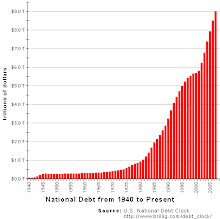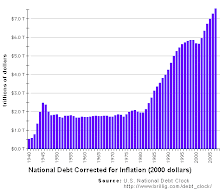Sunday, May 4, 2008
Demand
Demand is the relationship between various prices of a product and the corresponding quantity that consumers are willing and able to buy at each of those prices.
The quantity demanded is the amount that consumers are willing and able to buy at a particular price.
The law of demand states that, other things equal, the quantity demanded of a product decreases when the price of the product increases.
A demand schedule is a tabular representation of demand.
Price of a Hamburger Quantity of Hamburgers Demanded
$5 1
$4 2
$3 3
$2 4
$1 5
Table 1. An Example of a Demand Schedule
A demand curve is a graphical representation of demand. A demand curve can be a straight or curved line. It is traditional in economics to place price on the vertical axis and quantity on the horizontal axis. On the graph of a demand curve, the quantity demanded at a particular price is the horizontal distance between the vertical axis and the demand curve.
Figure 1. An illustration of a downward sloping demand curve. Demand curves slope downward because there is an inverse relationship between price and quantity demanded due to income and substitution effects.
There is usually an inverse relationship between the price of a product and the quantity demanded of it.
• When a product becomes more expensive, consumers tend to buy less of it. Price increases are typically associated with a decrease in the quantity demanded.
• When a product becomes cheaper, consumers tend to buy more of it. Price decreases are typically associated with an increase in the quantity demanded.
The quantity demanded is the amount that consumers are willing and able to buy at a particular price.
The law of demand states that, other things equal, the quantity demanded of a product decreases when the price of the product increases.
A demand schedule is a tabular representation of demand.
Price of a Hamburger Quantity of Hamburgers Demanded
$5 1
$4 2
$3 3
$2 4
$1 5
Table 1. An Example of a Demand Schedule
A demand curve is a graphical representation of demand. A demand curve can be a straight or curved line. It is traditional in economics to place price on the vertical axis and quantity on the horizontal axis. On the graph of a demand curve, the quantity demanded at a particular price is the horizontal distance between the vertical axis and the demand curve.
Figure 1. An illustration of a downward sloping demand curve. Demand curves slope downward because there is an inverse relationship between price and quantity demanded due to income and substitution effects.
There is usually an inverse relationship between the price of a product and the quantity demanded of it.
• When a product becomes more expensive, consumers tend to buy less of it. Price increases are typically associated with a decrease in the quantity demanded.
• When a product becomes cheaper, consumers tend to buy more of it. Price decreases are typically associated with an increase in the quantity demanded.
Subscribe to:
Post Comments (Atom)






No comments:
Post a Comment